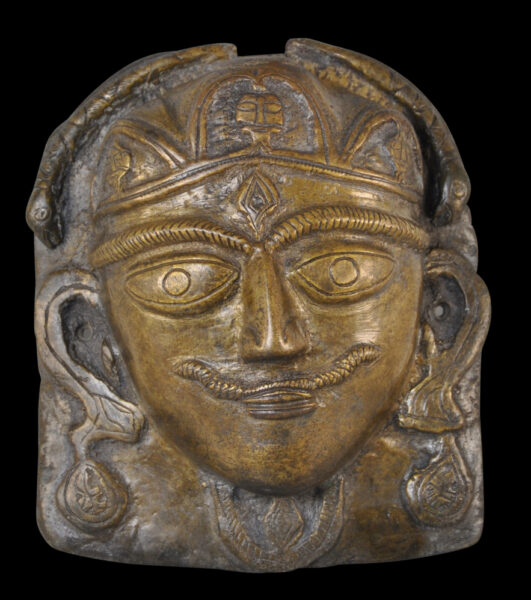This cast brass facial representation of a deity known as a mohra is unique to Himachal Pradesh in northern (Himalayan) India.
It comprises a face cast and chiselled in high relief. It has prominent almond-shaped eyes, a third eye on the forehead, prominent eyebrows and nose, and a moustache. A pair of snakes are draped from the top of the head, encasing it almost to the ears. The large ears are elongated and with ear pendants. The ears also have small holes to allow the mohra to be fixed to a wooden platform. The figure also wears a diadem and a necklace.
Mohras were kept in groups in shrines in eastern Himachal Pradesh, fixed to wooden palanquins or rathas. They were used in conjunction with annual festivals and rituals when the ratha carrying the mohras and adorned with flowers, would be carried in processions.
The age of a mohra was not important to its spiritual veracity: often they were recycled – they were melted to create new ones. They were usually related to local deities and heroes, as well as Shiva. The depiction of snakes on a mohra is not uncommon – snakes were associated with both fertility and the deceased given that their realm was supposed to be the underworld where the dead dwelt.
The surface of the mohra is smooth from handling and age.
The example here is accompanied by a custom-made display stand.
References
Pal, P., Himalayas: An Aesthetic Adventure, The Art Institute of Chicago, 2004.
Postel, M., A. Neven & K. Mankodi, Antiquities of Himachal, Project for Indian Cultural Studies, Volume 1, Bombay, 1985.







